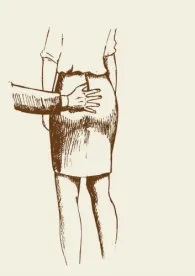When faced with an employment discrimination, harassment or retaliation claim, often the immediate response is, “We are going to defend ourselves and prove we are right,” followed by, “So what will it cost us if we lose?” This article describes the damages available to a prevailing party under the primary federal employment statutes.
To begin, the common denominator is attorney’s fees. In civil litigation, the norm is that each litigant pays for its own attorney’s fees. Under all federal anti-discrimination, anti-harassment and anti-retaliation laws, prevailing employees are entitled to their attorney’s fees. This is known as a fee-shifting law – the fees are shifted to the losing employer. In addition, the employer must pay its own attorney’s fees. Shifting attorney’s fees to the employer raises the stakes since it is not unusual in single plaintiff litigation for attorney’s fees to be more than any potential damages, particularly if you add the cost of defense with the plaintiff’s attorney’s fees.
Another often heard statement from clients is, “I assume if the company wins, we can make the employee pay our fees.” This is correct only in very limited circumstances. The Civil Rights Act of 1964 and the Americans with Disabilities Act (ADA) provide that a court may award the “prevailing party” its attorney’s fees, but courts generally limit recovery against an employee to claims shown to be frivolous, unreasonable, or groundless. This is a very high standard. In other words, employers should not count on the court compelling an employee to pay the employer’s attorney’s fees.
Other damages available to a winning plaintiff who is terminated are:
-
Back Pay: Generally the lost income, including wages, bonuses, overtime and other lost premium pay from the time of the termination until a judgment is rendered.
-
Lost Benefits: Lost benefits can range from the cost of employer-paid insurance, vacation, and pension contributions to the cost of paying for health care that would have been covered under the employer-paid insurance if the termination had not occurred.
-
Front Pay: A court may award front pay, which compensates a winning plaintiff for lost pay and benefits from the time a judgment is rendered until a future date determined by the court. While not a routine damage award, it is intended to compensate persons who are likely to face difficulties in securing future employment because of circumstances such as advanced age, disability or reputational damage resulting from the termination.
Back pay, lost benefits and front pay are subject to an offset resulting from interim earnings and benefits.
Additional damages available under the Civil Rights Act of 1964 include compensation for pain and suffering and punitive damages. However, the Civil Rights Act imposes caps on such damages based on the size of the employer.
-
For employers with 15-100 employees, the limit is $50,000
-
For employers with 101-200 employees, the limit is $100,000
-
For employers with 201-500 employees, the limit is $200,000
-
For employers with more than 500 employees, the limit is $300,000
Unlike the Civil Rights Act, the Age Discrimination in Employment Act (ADEA) does not authorize the award of compensatory or punitive damages. It does, however, permit a winning plaintiff to be awarded liquidated damages if the employer was found to have intentionally violated the law. Liquidated damages is an additional amount equal to the back pay (i.e., double back pay).
This article only addresses federal law. Most states have laws prohibiting the same conduct as covered by the Civil Rights Act, the ADA and the ADEA. However, the potential damages are often broader and not capped under state laws. Employers can count on an aggrieved employee to claim a violation of state or local laws as well as federal law and to seek the most liberal remedy.



 />i
/>i

